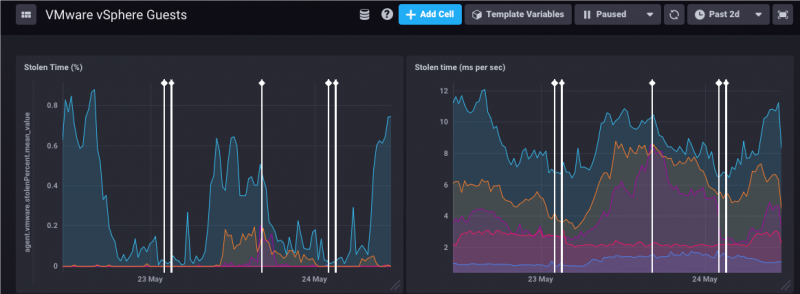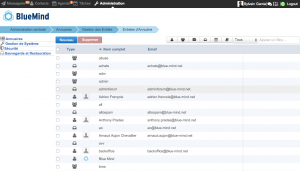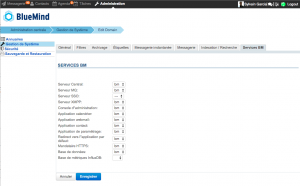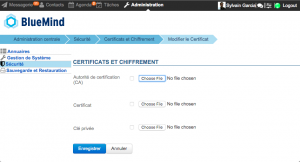Infrastructure
Operate all of BlueMind through its Web console!
The BlueMind architecture is designed according to the best software engineering practices. It is based on the leading open source messaging components and combines robustness, flexibility and scalability.
Administration
An easy and effective way to administer BlueMind
The administration UI allows you to create and manage directory objects:
- Users and groups
- Resources
- Shared mailboxes
- Your organization’s calendars and address books
Configuration and deployment
Design your own email infrastructure
You can operate your infrastructure from your web UI. The BlueMind architecture allows you to run all services on a single server, but you can also split it over several servers if needed.
In just a few clicks, you can add a storage backend to migrate mailboxes to using the graphical interface. The UI allows you to add a server and assign it a role, such as:
- Email storage backend
- Mobile devices synchronization server
- Indexation server
This flexibility makes it easier to adapt your infrastructure as your needs change over time.
Security
For increased security and simplicity, BlueMind incorporates advanced certificate management which allows you to encrypt server exchanges. This is installed through the admin console, making the process transparent for your entire BlueMind infrastructure.
To protect your servers, BlueMind incorporates a firewall which is configured automatically to let through the necessary flows between authorized hosts exclusively.
Directories
With BlueMind, you can interconnect natively to LDAP or ActiveDirectory directories.
Users and group management remains unchanged across your tools.
- User management
- Group management
- Multi LDAP directory compatible
- Global AD catalog compatible
- AD forest management.
SSO: CAS and Active Directory
With BlueMind, you can enjoy all the benefits of an SSO authentication interconnection. Specifically, it supports:
- CAS (Central Authentification Service)
- ActiveDirectory Kerberos.
Once you are logged into your workstation, there is no need for you to re-enter your password to connect to BlueMind, including, obviously, Web UIs.
Backup
BlueMind’s backup system is included. It can be administered straight from the Web admin console. With it you:
- Save time: thanks to incremental backups, only differences in data are transferred.
- Enjoy advanced features: such as data historization.
- Save space: data is historized, not duplicated; each backup is self-contained (snapshot-type).
- Get optimized data: data is deduplicated automatically.
Archiving
Hierarchical storage allows you to choose specific storage spaces, usually to get more storage at a lower cost. BlueMind incorporates hierarchical storage-based archiving, with the following features:
- Archiving rules (messages older than “n” days, etc.) by domain, refined by groups or users
- Users can transparently access archives via BlueMind’s webmail and thick clients (Thunderbird, Outlook, etc.).
Monitoring and observability
Finding the cause of a system breakdown or bug can often be tricky.
This is why BlueMind now incorporates a complete, open-source metrics collection, alerting and viewing stack: TICK stack.
Metrics collection can be customised and used to perform advanced queries. It can provide system data (resource consumption, disk space, number of connections, etc.) and usage data (number of incoming emails, average size, clients used, etc.), both current and past as historical data is saved.

For instance, this graph shows “stolen time”, i.e. the time stolen from the application by the virtualisation platform, which reflects the impact applications running in parallel with your mail system have on it.
These metrics can help anticipate issues and set up automatic responses such as a service restart or data redistribution (e.g. search indexes) to make administrators’ jobs easier and ensure that the mail system runs properly.
To find out more, read our full blog article / our documentation / or the video of our presentation of BlueMind monitoring (in French).




